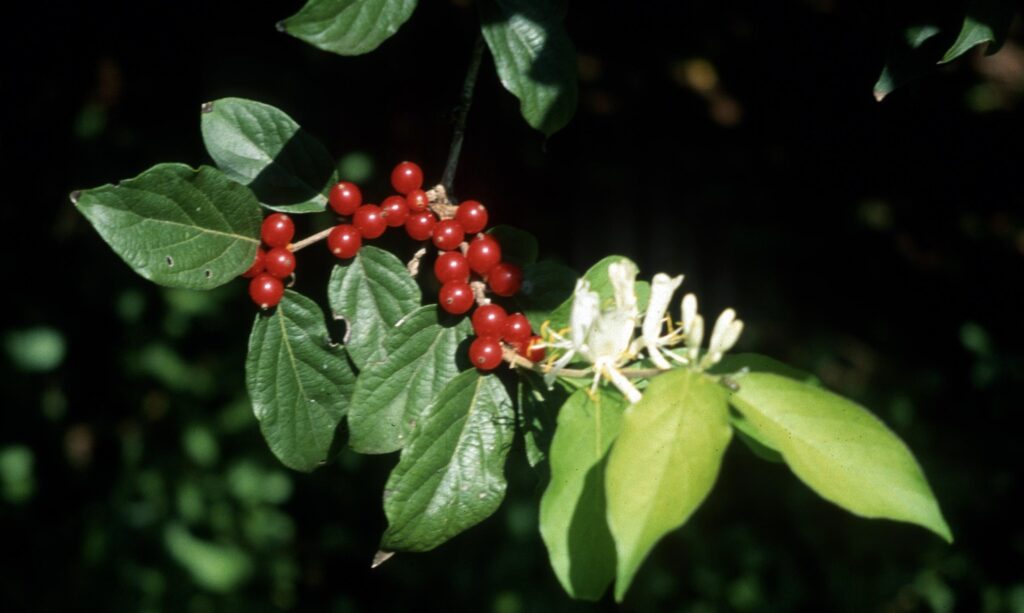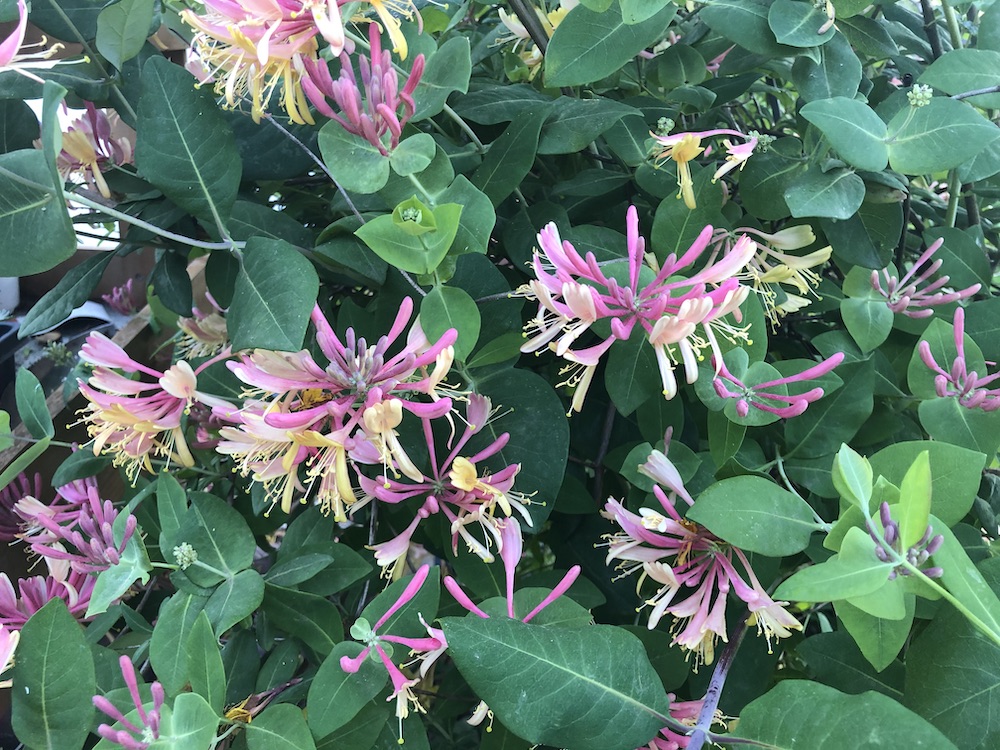
Asian honeysuckle fruit and flower.
In honor of our resolution to remove an invasive plant species from your landscape, we’ll talk about Asian bush honeysuckle. Planted as an ornamental shrub since the early 1800s, bush honeysuckles have been around long enough to pretty much invade not only our backyards, but roadsides, along with wild and natural areas.
The bush honeysuckles bloom in spring or summer and form berries, which persist a long time. The leaves also show up early and stay late, making bush honeysuckle one of the first and last shrubs to get and hold their leaves.
Because of their habit of hanging onto their leaves, these shrubs shade out many native spring ephemerals, such as spring beauties (Claytonia virginica). There’s also some research that suggests these shrubs are allelopathic, which means they distribute a chemical through the soil which prevents some plants from growing near them. The shrubs’ survival technique keeps all the nutrients for themselves.
The Asian bush honeysuckles (Lonicera maackii, L. tatarica, L. morrowii, L. x bella) produce flowers and fruits. The birds like the fruits and drop the seeds wherever.
When I bought this house, the back yard property line was invaded by Asian bush honeysuckles. Which ones I don’t know. The smaller ones were fairly easy to pull or dig out. But there was a LARGE one that took me the whole first summer here getting it out.
I whacked it back which was satisfying. At least its bulk no longer dominated that part of the yard. The stump and roots were the challenge. I felt like I was in a cartoon trying to get it out. I used just about every tool I had except maybe the hammer. Pruning saw. Ax. Tire iron. Soaking it. Sawing it. Digging at it. I got a lot of it out bit by bit. Then one day, when using the tire iron to try and pry out the last bit. It worked and when the honeysuckle remnants gave way, I fell back and landed on the butt. Still satisfying.
But I digress. Removing honeysuckle doesn’t have to be so dramatic. Conservation groups cut the bushes back and paint the stump with an herbicide. The button below takes you to more info about these and control recommendations from the Indiana Department of Natural Resources.
Japanese honeysuckle (L. japonica ‘Halliana’) is a climber or trailer with great fragrance. Sometimes labeled at ‘Hall’s’ honeysuckle, the sale, sharing and planting of Japanese honeysuckle is prohibited by Indiana law because of its invasiveness. I know. It really smells good.

Above is ‘Goldflame’ (L. x heckrottti), which I’ve had for years. North Carolina State University says it is “the hybrid formula of this artificial cross is L. caprifolium × L. etrusca × L. sempervirens. There are other native climbing honeysuckles (L. sempervirens) ‘John Clayton’ and ‘Major Wheeler.’ The latter has long-blooming red flowers and fragrance. ‘John Clayton’ has yellow flowers.
There are native honeysuckle shrubs called Diervilla. There’s a northern and southern version of this small to medium shrub, that tolerates shade. The blooms small yellow flowers in summer, but nothing that makes you yell “Stop the car Martha, what plant is that?” However, that might be the response in fall when the Diervilla leaves take on their seasonal color.
Garden-worthy native alternatives for Asian bush honeysuckle include viburnums like arrowwood (V. dentatum) or withe rod (V. nudum), button bush (Cephalanthus occidentalis), or northern spicebush (Lindera benzoin).
More about Asian bush honeysuckle.